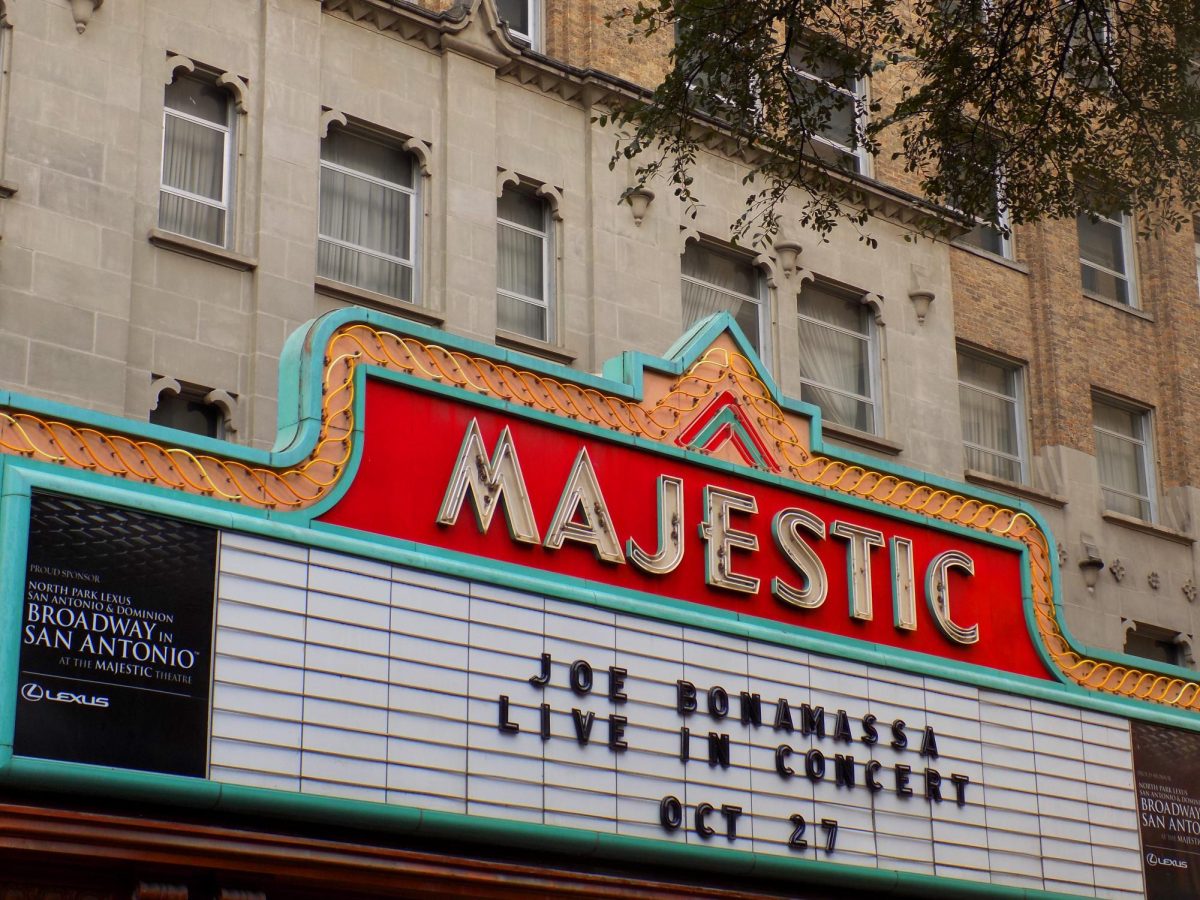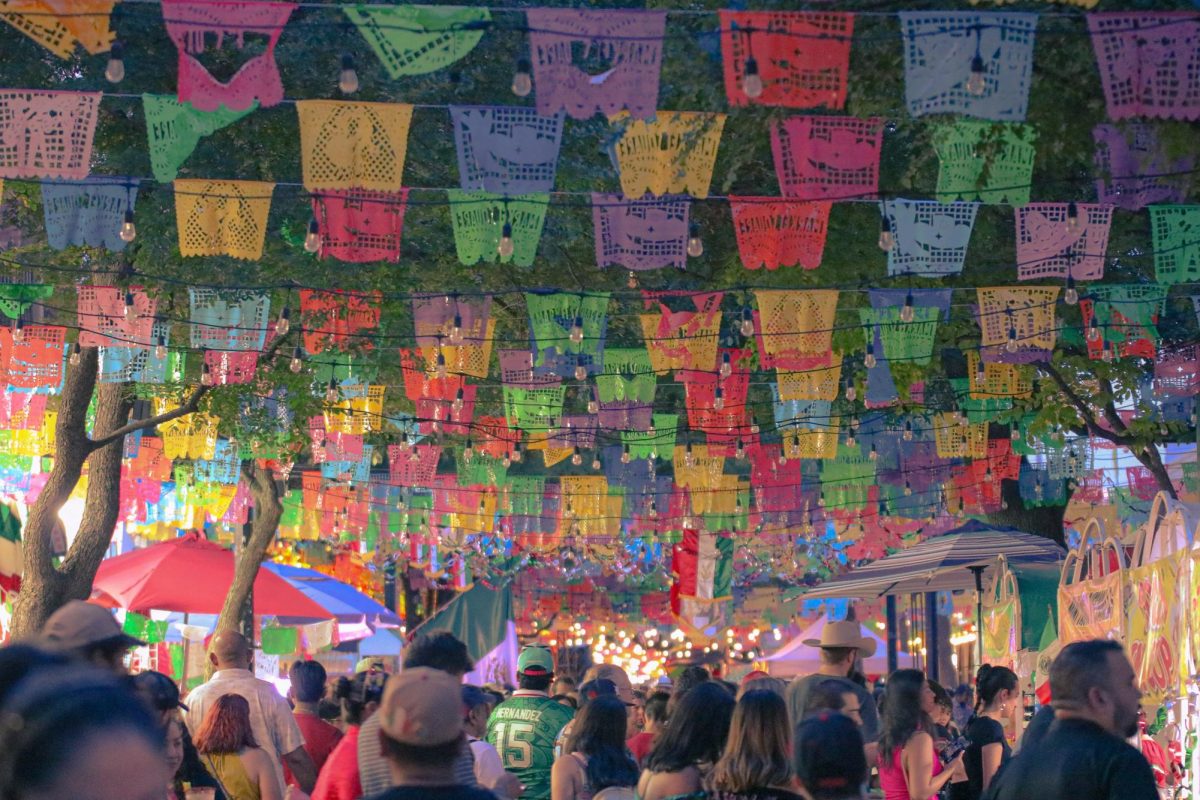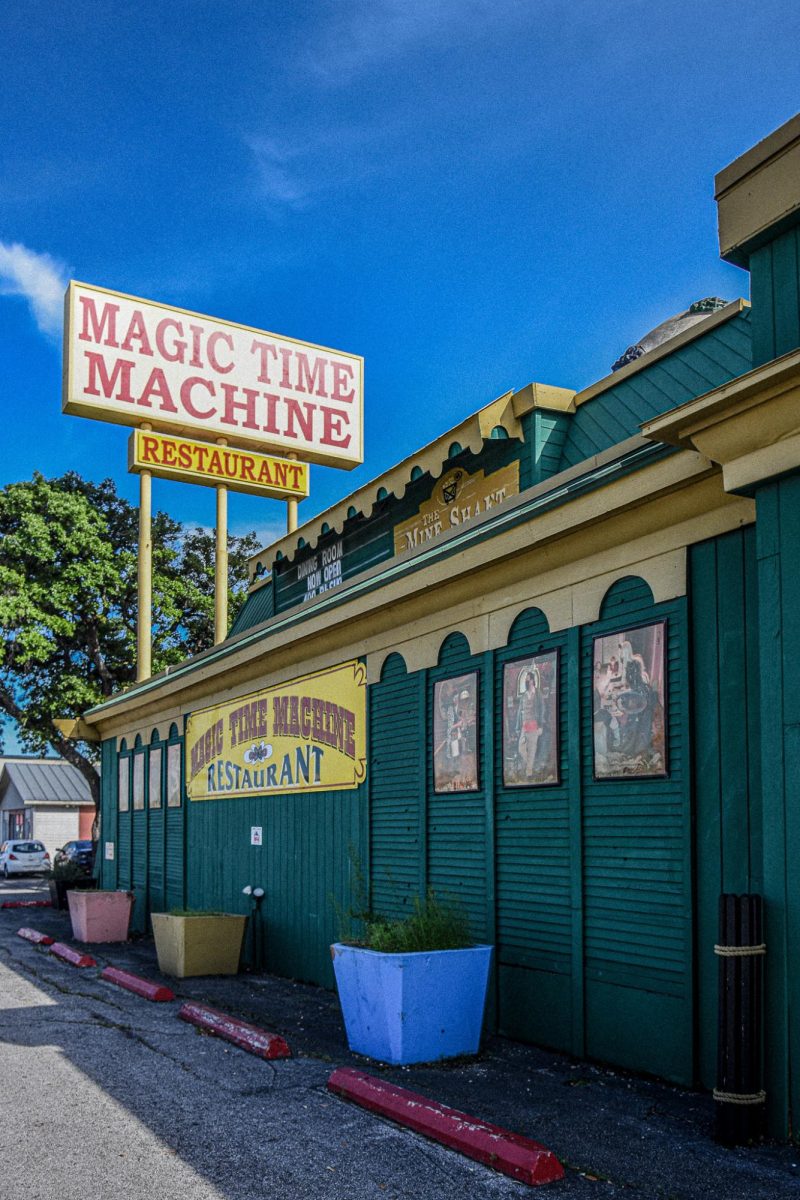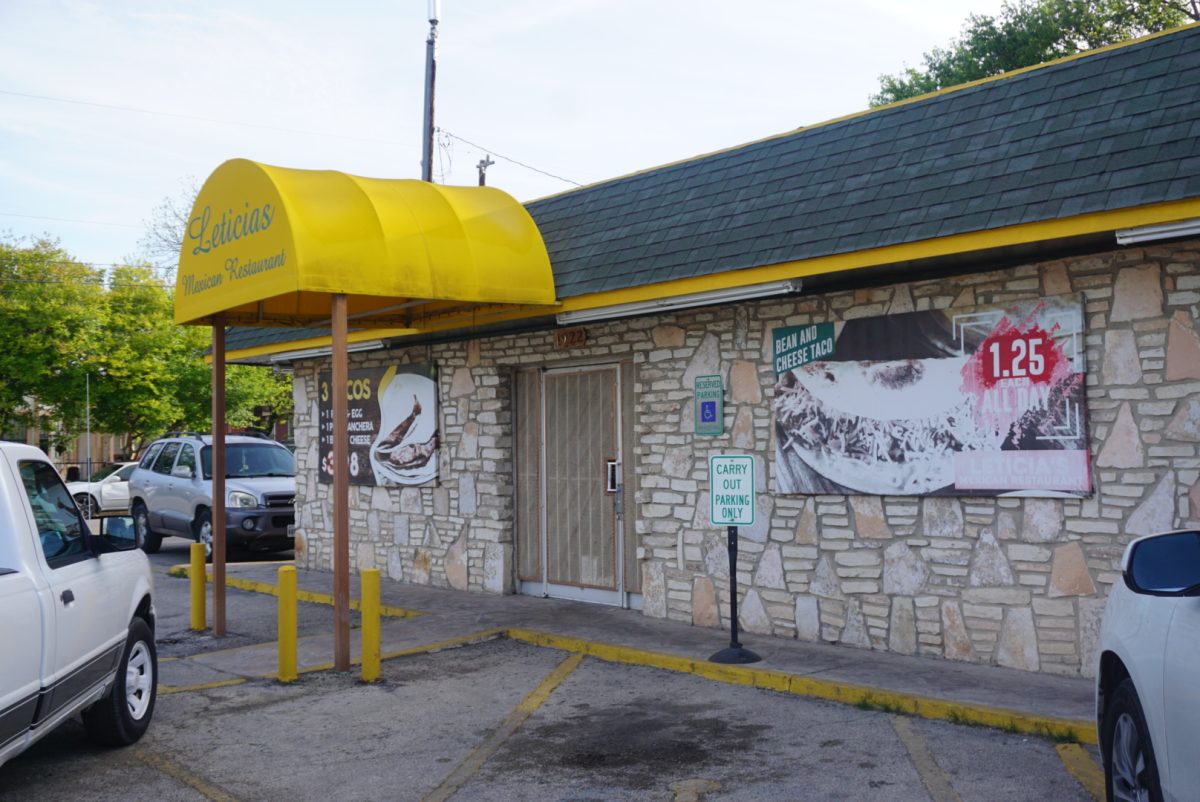With a city as old as San Antonio, there are bound to be some skeletons in the closet. The city was founded on May 1, 1718, when a Spanish expedition from Mexico established the Mission San Antonio de Valero. San Antonio’s history, like many old cities, is full of tragedy and death. This Halloween, let us dive into the spooky side of San Antonio and meet some of the ghosts said to be haunting our streets.
The Gunter Hotel
The land the Gunter Hotel stands on has served as a hotel property since 1837, just a year after the fall of the Alamo. The Gunter officially opened its doors in 1909 and was named after an investor who died during its construction. At the time of opening, the Gunter was one of the most extravagant hotels Texas had ever seen, and it stood as the tallest building in San Antonio. Famous guests of the hotel include Franklin Roosevelt, Harry Truman, John Wayne and, of course — the guests who will never leave.
Ghosts
- Ingrid and Peggy: These two ghosts are said to haunt the hotel halls and are quite loud, but harmless. Ingrid is said to be seen wearing a white dress with long dark hair, and Peggy is seen in short flapper attire. It is unknown who they are, but they are assumed to be 1920s flappers or prostitutes. The ghosts are often seen slamming doors, throwing things at each other, tugging guests back and forth and in the occasional photo bomb.
- Robert Johnson, Room 414: Johnson was a famous blues musician during the 1930s and is said to haunt The Gunter’s Room 414. On Nov. 23, 1936, Johnson began the first recording session of his career, where he produced a song titled “Cross Road Blues,” which hinted at a deal with the devil in exchange for fame. This recording session was only one of two, as Johnson passed away two years later under suspicious circumstances. Despite dying two states away, it is believed Johnson haunts the room where he first experienced success. Johnson is said to be a positive spirit and a muse for artists. The hotel also houses a bar named Room 414 in his honor.
- Women in Room 636: San Antonio’s largest unsolved mystery took place in The Gunter’s Room 636 in February 1965. The story starts when a man named Walter Emerick checked into the room under a fake name. Over the next few days of his stay, he was seen throughout the hotel accompanied by an unidentified blonde woman. On his checkout date, a maid went up to begin cleaning the room and, upon entry, saw Emerick sitting on the bed with every surface of the hotel room covered in blood. Emerick then raised his fingers to his lips to shush her as he ran out of the room carrying a bundle of bloody sheets. In the following days, he checked into the nearby St. Anthony Hotel, demanding room 636 there. Because it was booked, he settled for room 536, which he checked into using another fake name. The staff eventually became suspicious of his behavior, and upon police arrival, he shot himself before they could enter. In the bloody mess, no substantial amount of a body was uncovered, and no missing person matched the case. Based on his purchases before the event, it was assumed that Emerick bought a meat grinder and ground up the women into the plumbing at The Gunter. Whatever remained wrapped in the hotel sheets is believed to have fallen onto the wet concrete lining the city streets as he ran. Despite The Gunter’s attempts to remodel and shake the room where the tragedy took place, guests have reported seeing the murder or seeing the woman standing where it occurred.
The Majestic Theatre
The Majestic Theatre is one of San Antonio’s most beautiful destinations. The architecture stuns its attendees and has long been a marvel in the city’s destinations. The Majestic Theatre first opened its doors in 1929, and it was the first theatre in Texas to have full-blown air conditioning. It was also the largest theatre in the American South and the second-largest in the United States. It is said that everyone loves the Majestic so much that they stay in the afterlife to enjoy it too.
Ghosts
- Ballet troupe: It is rumored that there was a ballet troupe that regularly performed on the Majestic’s stage, but one night while practicing, something went horribly wrong. It is said that the lights from above fell suddenly, killing the practicing ballerinas. They supposedly still haunt the stage, practicing for a show that will never come. While there is no concrete evidence of these deaths, they have been widely reported among staff and late-night visitors.
- Magdelene: The spirit of a woman has been seen on the Majestic’s second level, facing center stage. A medium visited the Majestic and saw her presence enjoying the performance. He said he believed her name to be Magdelene, and she is thought to have been an avid theatre attendee, still partaking in her favorite activity beyond the grave.
- Woman in apartments above The Majestic: Above the extravagant theatre, there are also apartments and offices available for rent. In 2004, a woman fell 14 stories to her death out of the small window of her and her husband’s apartment. It is said that she climbed out of the window to get his attention and lost her footing, but others speculate foul play. She landed on the Majestic’s street-level marquee, and her arm was severed on impact, landing in the street. It is said that you can see a dented bar from her body hitting the marquee. Not much is known about her ghost, and only one report can be found about her death.
Emily Morgan Hotel
The Emily Morgan Hotel stands thirteen stories tall as the third-most haunted hotel in the world. The hotel has only been in operation since 1984, but the building itself has held its place in the San Antonio skyline since 1924. The building was designed to be the city’s first medical arts building. This can be seen in the exterior architecture featuring gargoyles seemingly suffering from illnesses that plagued the times. These afflictions include toothaches, broken teeth and stomach pain. The downstairs levels functioned as doctor’s offices, and the upper floors were the best-working hospital in the city. The basement was used as a morgue, and surgery spaces were on the top floors. Several floors also served as a psych ward. To increase efficiency, the hospital is rumored to have included a chute used to freefall bodies passed during surgeries on the top floor to the morgue. When it was converted into a hotel, the pool was constructed using gurneys from the once-operating hospital to save money.
The namesake of the Emily Morgan Hotel is none other than the yellow rose of Texas herself. Born Emily D. West, Emily was a free woman of color from New Haven, Connecticut. Since women of mixed races were required to serve as indentured servants for a few years, she was contracted to James Morgan in Morgans Point, Texas, where she took his surname. In 1836, Emily and some of her colleagues were kidnapped by the Mexican Cavalry led by Santa Anna. Her involvement in the war is best described by British traveler William Bollaert, who wrote, “The Battle of San Jacinto was probably lost to the Mexicans, owing to the influence of a [mixed] girl belonging to Colonel Morgan, who was closeted in the tent with General Santana, at the time the cry was made, ‘The enemy! The enemy! They come!’ She delayed Santana so long that order could not be restored readily again.” Emily’s influence and notoriety as the savior of Texas was revisited in the song “The Yellow Rose of Texas.”
Ghosts
- The 12th and 14th floors: Used as one of the operating levels, guests staying on the 12th floor have experienced bathroom doors opening and closing, water dripping, then free-flowing, flooding the bathroom. Others report seeing nurses pushing loud gurneys throughout the halls and then disappearing into thin air. Guests on the fourteenth floor say that it smells exactly like a hospital. This floor served as the waiting room for surgery and is complete with the energy and feelings left behind. Guests report opening their rooms to find a hospital scene inside, but upon closing and reopening the door, the scene disappears.
- Elevators: The elevators seemingly have a mind of their own or are possibly controlled by something else. They are reported to travel up and down without being requested, skip past requested floors, lock riders in and even take them down to the once-operational morgue basement without being requested.
- Basement: The basement is closed off to visitors, but employees report seeing orbs and hearing voices. The once-operational morgue reeks of burning flesh, reminiscent of the hundreds of bodies incinerated there.
- Ghost bride of the seventh floor: The most haunted floor of the hotel is the home of an unknown woman. This woman can be heard screeching in the dead of night, seen in the mirror and is responsible for many guests demanding to switch rooms.
Alamo
If you grew up in Texas, Texas history is not a topic taken lightly. With two years of school dedicated to the Lone Star State, chances are you have not forgotten the Alamo. For those needing a recap, the Alamo was established as the church Mission San Antonio de Valero. The mission was created to spread Roman Catholicism to the local Native Americans. The church became the first hospital in Texas, and eventually, it served as a fort named the Alamo after the cottonwood trees. For 32 years, the Alamo defenders protected the city from Apaches and Comanches. When Mexico gained independence from Spain, the city began to desire freedom. During the battle of the Alamo, Santa Anna left no survivors. Around 250 Texans died defending the Alamo. They were refused a proper burial, and some were thrown into three piles and lit on fire. Others were buried in mass graves or thrown into the San Antonio River. The Alamo is responsible for the majority of the ghosts in the area, including at the places listed below.
Ghosts
- Defenders of the Alamo: The first sighting of ghosts at the Alamo was soon after the battle, when Santa Anna mandated the historic church be burned to the ground. The group of cavalrymen sent to complete the task did not attempt it, as upon arrival they saw six “diablos,” or devils, standing in front of the Alamo holding flaming swords. Of course, Santa Anna did not believe them and accompanied a second group to burn it down. They saw a similar sight, this time a tall male spirit rising up on the roof of the barracks, holding in each of his hands a ball of fire.
- Little boy of the Alamo: Seen most frequently in February, a young blonde boy is spotted wandering the property in what is currently the Alamo gift shop.
- Ghost soldiers: It is no surprise that the most commonly seen ghosts are those of soldiers, both Texan and Mexican. These soldiers are seen marching, on watch or grieving. Visitors report hearing voices, feeling overwhelmingly uncontrollable emotions and, of course, the feeling of being watched.
Crockett Hotel
Located adjacent to the Alamo, the Crockett Hotel has a similar and equally tragic history. It is believed that the Crockett Hotel’s swimming pool and patio area are the sites where Davy Crockett and the other Texan revolutionaries took their last breath. This area once stood as the southeast palisade of the Alamo compound. The land was empty and used for farming until 1874, when a general store opened. Following the general store, the land was purchased by the San Antonio branch of the International Order of Odd Fellows, which is defined as a “non-political and non-sectarian co-ed international fraternal order.” On the land, they built the Crockett Hotel.
Ghosts
- Alamo Defenders: Since it is believed the defenders took their last breaths on the property, it is also thought that they remain. Ghosts of the defenders can be heard chanting in the halls, accompanied by the sound of horses. There have also been sightings of a man believed to be Davy Crockett roaming the halls of the hotel. Cold spots, doors opening and closing and orbs have been reported inside the hotel.
- Executive offices: The Crockett’s executive offices oversee the swimming pool and patio and stand in the exact place where Santa Anna’s troops waited to breach the Alamo’s walls. Staff claim these offices are the most haunted parts of the hotel and have witnessed the apparition of a man in a dark blue jacket wandering outside toward the patio area. Staff have also seen curtains in empty rooms opening and closing.
- Elevator tragedy: Tragedy struck the Crockett Hotel in 2011 when a staff housekeeper called for the service elevator on the sixth floor of the hotel. The doors opened, but there was no elevator, and the housekeeper fell down the elevator shaft to her death, according to KSAT.
The Menger Hotel
Prior to its opening as a hotel, like the Crockett, the Menger Hotel was the scene of the Battle of the Alamo. The hotel was completed in 1859 and was a breathtaking sight. During the Civil War, the Menger closed its doors as a hotel and instead operated as a makeshift hospital, resulting in many deaths on the property. The walls of the hotel saw much history, including visits from 11 presidents, Civil War leaders Robert E. Lee and Ulysses S. Grant and writer Oscar Wilde. While it is unknown the exact number of spirits who continue to call the Menger home, the number is thought to be anywhere between 32 and 45.
Ghosts
- Teddy Roosevelt: The ghost of Teddy Roosevelt is said to haunt the attached Menger Bar where he would spend time during his visits to the hotel, looking to recruit for the U.S. volunteer cavalry. He is one of the most reported ghosts at the hotel and can be seen in the bar, just standing still. On rare occasions, he can be heard trying to find recruits to join his Rough Riders.
- Sallie White: Sallie White worked at the Menger in the late nineteenth century as a chambermaid. Her husband was extremely jealous, and one night in 1876, his jealousy became deadly. As she attempted to run away from him during a fight, he shot her twice, and she died two days later on the third floor of the hotel. She is seen frequently throughout the hotel, most often on the third floor, clutching an armful of sheets.
- Other ghosts: Due to its long and tragic history, the Menger has seen many suicides and murders, including one of the most successful entrepreneurs of the nineteenth century, Captain Richard King. He is best known for the establishment of King Ranch. He died of stomach cancer in his private suite and is seen wandering the hotel, most often near his suite on the second floor. A dancing red orb can supposedly be seen in the room near the exact bed he died on all those years ago.
So, what do you think? Does the haunted history of San Antonio make you want to avoid downtown altogether, or do you crave experiencing these apparitions for yourself? Let us know in the comments if you believe these ghost stories to be true or if this is just another tourist trap. Either way, the rich history of our city is not going anywhere, and through remembering and appreciating these sacred spaces, we keep the memory of those lost alive. The listed spaces are available for visiting, with tickets required for inside the Alamo and the Majestic Theatre. If you are new to San Antonio or would like to learn more about its haunted history, we recommend attending a ghost tour downtown to experience the paranormal for yourself.













